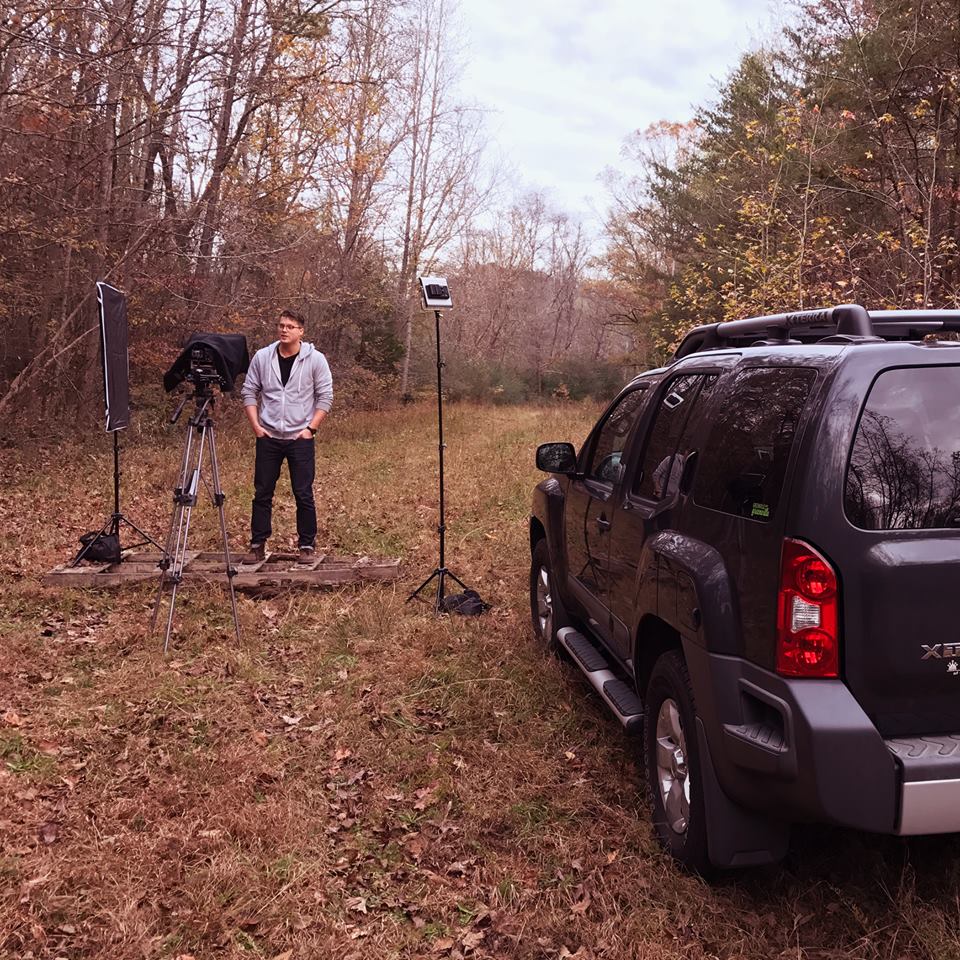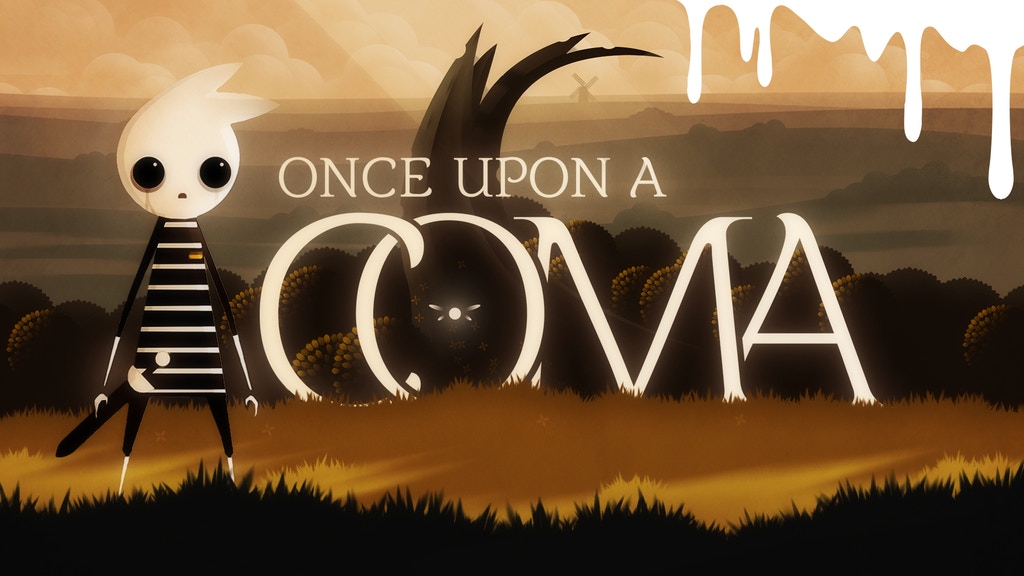Kickstarter’s Indie Wonder Boy: An interview with Thomas Brush
Pinstripe’s creator talks about his new hit Kickstarter campaign and how indie gaming is a “suicide mission”.

Thomas Brush has just started a new fundraising Kickstarter campaign to develop his new game: Once Upon a Coma. The lone developer behind video game indie studio Atmos Games and creator of the critically acclaimed Pinstripe has already been backed by 250% from his $28,000 original goal. Brush’s new creation is now following Pinstripe’s steps on the road to success.
Previously known as “the kid that could draw really well”, Brush has already proven his fierce motivation as an entrepreneur with the success of Pinstripe. He has confessed that he probably won’t stick with video games as a narrative medium for long, pointing out his love for the film industry. Even so, he admits how financially hard it would be to dive into, so for the time being at least, we still have his work in games to look forward to.
This talented illustrator, musician, storyteller and video game developer kindly accepted The Indie Game Website’s request for an interview and here’s the complete, unedited result.
TIGW: How was Pinstripe’s story born in your mind and why did you choose to touch the delicate topic of vices and their effect on a family? What message did you intend to leave?
TB: I got the idea for Pinstripe after reading a story called The Great Divorce, by C.S. Lewis. It’s a story about this guy that goes from Hell (called Great Hell) and he goes to Heaven. I also got inspiration from various artists like Eyvind Earle and Esao Andrews.
I’ve seen a lot of families affected by addiction and it’s seems to touch every family. It kind of just manifested without me really knowing it. The game took five years to make so it wasn’t originally about alcoholism. It kind of just turned into that.
Whenever I get a question about a theme of a game I don’t really like to disclose it, because that’s kind of like a spoiler. I’ll just say that hopefully at the end of the game players will get an idea of what I’m trying to say.
TIGW: What are the challenges you faced developing a game by yourself?
TB: There was never enough time. I worked for three years in a marketing agency and I would try and find time during lunch hours, or in the morning before work. I would wake up at 5:30 or 6 and work for an hour before I went to work. I would also work in the evenings, and I was married at the time, so it was tough to balance family, work and game development.
TIGW: How do you feel now as a creator after Pinstripe’s success?
TB: I feel good. I set out to do what I needed to and it certainly paid off in a lot of ways. Mainly just in an emotional level. It feels really special to finish something.

TIGW: What kind of influences would you say had an impact on Pinstripe?
TB: Eyvind Earle and Esao Andrews influenced the style of the game. Tim Burton, Frederic Chopin and Claude Debussy. Overarching all of that is the Legend of Zelda video game series, its simplicity and aspect of exploring nature really had an influence on Pinstripe.
TIGW: What’s your opinion on indie gaming today, relative to the big industry titans?
TB: I don’t think there’s anything wrong with being a big industry titan or wanting to make a lot of money and exploit various IPs. That’s totally fine. Regarding indie gaming, I think it’s a beautiful thing, and that’s why I’m certainly involved. But indie gaming is kind of a suicide mission in a lot of ways. First, because typically indie games aren’t necessarily seeking out to be commercial successes. The whole idea of indie gaming is that interesting and unique games that haven’t really been proven in the market are being financed by places like Kickstarter and small publishers.
But the second part about indie gaming that’s tough is that it’s a way overcrowded market. And that’s not wrong, but certainly hard. When it’s so easy to get a game on Steam or something like GOG or Itch.io or even right now it’s pretty easy to get one to Nintendo Switch and Playstation and Xbox. Obviously PS4 and Xbox One are a little bit harder, but it’s getting really easy to make games. What that means is that everyone can be an indie game developer and everyone’s competing with everyone. It’s really hard to fight for that shelf space.
What if Walmart allowed every single brand of cereal on the shelves? You’d have like boxes of cereal all over the place, on the floor, being stuffed on the top shelf, on the bottom shelf, it’d just be chaos.
It’d be really hard to find the best cereal, which is Captain Crunch, on the shelf. It’d be almost impossible to pick out the good cereals. The same is true for indie game development, when the shelves are just crowded with games it’s really hard to stand out. I think what happens is that a lot of indie game developers get discouraged when they don’t get noticed, and their game might be incredible.
I’m learning to accept the fact that if I have a bad month, or even a bad year and my games aren’t getting noticed I have to tell myself that it’s unlikely that it’s the quality of the game, it’s just the typical fight for exposure.

TIGW: What kind of advice would you give new entrepreneurs or young people that want to bring to life their own ideas and don’t know how?
TB: I would say that first find out what your talent is. If you’re not talented in something, you might want to rethink what you’re doing. But if you don’t know what you’re talents are, then just knock yourself out, figure out what you’re good at. But a lot of times, especially when we’re in college, when you’re figuring out what you’re talented at, I would say pursue those talents.
Related to that, talents are similar to passions. If you’re passionate about something, a lot of times your passion is related to a talent. For me, my talent has always been illustration, ever since I was a kid. And it was something I identified with because everyone knew me as the kid that could draw really well. It became my passion because it was part of my identity.
My next advice is to finish something and release it to your family or online and ask for feedback. If you’re really confident release it on Steam or submit it to a festival. Just finish one thing. It’s amazing how most people don’t finish projects. They’ll finish a project for school but they won’t finish a project that they do on their own time. That’s a really sad thing because that way you never really know if you’re actually gifted at something.
TIGW: You are now working on a new game with a new campaign on Kickstarter: Once Upon a Coma. How is it related to what we’ve already seen from your work?
TB: We’re almost six days in (at the time of the interview) and 200% funded. I like making games that are like Pinstripe. I like making 2D platformers that tell a story, that have beautiful artwork and beautiful music. I don’t know if i’ll ever make a game that’s different than that. Obviously I might move on from games and make films or something or score some music for films or write screenplays because I love telling stories. I like the kind of games I make currently and I don’t feel the need to change.

TIGW: You’ve had to endure jobs you didn’t particularly like in order to finance your gaming projects. Is that life over? How was that experience in hindsight?
TB: It’s over right now because of Kickstarter. But even after Pinstripe’s launch I had to take on work to continue my studio. They were small projects, illustration. It wasn’t the funnest thing, but it felt good knowing that I was making an extra 100 or 200 dollars to finance the studio. But regarding taking full on large jobs to fully finance the studio, that life is certainly over.
That was really tough, that was one of the darker seasons of my life because there was always this inner demon that said that I was wasting my time and fooling myself. I really didn’t have the time or anything released and I was at the fourth year of development of Pinstripe. There were a lot of people around me that looked at me weird or asked me why I was still working on Pinstripe. That was hard because I had to tell myself that I was pursuing something valuable when not many people would agree with me.
My wife agreed with me, she was one of the few people in my life that kept pushing me and believing in me. I don’t really know why she believed in me at the time, but she did. If she wasn’t encouraging me as much as she did, I certainly wouldn’t have released Pinstripe.
TIGW: Why do you think that indie games traditionally rely so much on the platformer genre?
TB: Platformers are cheap. Another genre that indie game developers rely on is the 3D exploration genre, walking simulators like Gone Home or Firewatch. Really beautiful 3D environments with very little animation. It’s pretty cheap to just build a 3D environment, especially if you yourself are a good 3D modeler. The same is true for 2D art, if you’re good at 2D art you can just make a beautiful 2D landscape and then have a character that explores and interacts with it, with some dialogue and some enemies.
TIGW: The feeling I got when I finished Pinstripe was that the story I had experienced could have easily been a film or a TV Series about a broken man in Hell. Why did you choose gaming as a medium to send your message?
TB: I chose gaming because, honestly, it’s really hard to break into the film industry and it’s really expensive. But with game development you can build everything from scratch right in your screen. You don’t have to go buy a camera or hire and find actors and find a distribution network. Gaming was the best way to tell this story and it all happened in one room in my house. And that’s what’s really cool, especially about 2D games. They are financially cheap if you have time to spend.

